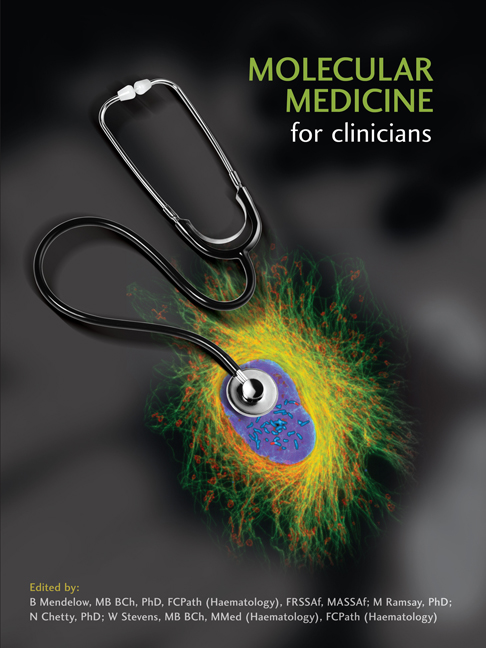Book contents
- Frontmatter
- Contents
- Foreword
- Acknowledgements
- Chapter 1 Introduction
- Keynote Essay 1: Defining Who We Are: DNA in Forensics, Genealogy and Human Origins
- Section 1 Principles Of Cellular And Molecular Biology
- Chapter 2 Digital Concepts in Molecular Medicine
- Chapter 3 The Anatomy and Physiology of the Genome
- Chapter 4 Molecular Cell Biology
- Chapter 5 Genetic Variation
- Chapter 6 Genes in Development
- Chapter 7 Tools of Molecular Medicine
- Keynote Essay 2: The Human Genome
- SECTION 2 MOLECULAR PATHOLOGY
- SECTION 3 MOLECULAR THERAPEUTICS
- SECTION 4 RESEARCH AND THE CONTINUING EVOLUTION OF MOLECULAR MEDICINE
- Glossary
- Contributors’ Biographies
- Source Material And Recommended Reading
- Permissions And Credits
- Index
Chapter 4 - Molecular Cell Biology
from Section 1 - Principles Of Cellular And Molecular Biology
Published online by Cambridge University Press: 04 June 2019
- Frontmatter
- Contents
- Foreword
- Acknowledgements
- Chapter 1 Introduction
- Keynote Essay 1: Defining Who We Are: DNA in Forensics, Genealogy and Human Origins
- Section 1 Principles Of Cellular And Molecular Biology
- Chapter 2 Digital Concepts in Molecular Medicine
- Chapter 3 The Anatomy and Physiology of the Genome
- Chapter 4 Molecular Cell Biology
- Chapter 5 Genetic Variation
- Chapter 6 Genes in Development
- Chapter 7 Tools of Molecular Medicine
- Keynote Essay 2: The Human Genome
- SECTION 2 MOLECULAR PATHOLOGY
- SECTION 3 MOLECULAR THERAPEUTICS
- SECTION 4 RESEARCH AND THE CONTINUING EVOLUTION OF MOLECULAR MEDICINE
- Glossary
- Contributors’ Biographies
- Source Material And Recommended Reading
- Permissions And Credits
- Index
Summary
INTRODUCTION
The cell is a dynamic system – a vast array of inter acting molecules forming complex metabolic networks in continuous motion. Proteins are the active molecules transforming the information encoded in genomic DNA into function, enabling and regulating cell life – division, differentiation, communication – and death.
The complement of proteins within a cell at any given time may exceed 400 000. These molecules have many diverse roles. They may be extracellular messengers, such as hormones or growth factors, they may be ion channels or membrane receptors for hormones, growth factors or neurotransmitters, they may function as enzymes or response elements within the cell, or they may be regulators of nuclear transcription. In medicine, most of the differences between tissues in health and disease are seen at the protein level.
In this chapter, we will focus on the cell cycle, cell division and differentiation, and programmed cell death or apoptosis. We will explore the cellular communication networks that regulate these processes and consider the actions of certain of the proteins involved in the systems. But first, because it is such an important mechanism in the control of cellular activity, we begin with a brief discussion of protein phosphorylation.
PROTEIN PHOSPHORYLATION
The presence of phosphate in protein molecules was known more than a century ago but only in the 1950s, as a result of independent studies of Sutherland and co-workers and Fischer and Krebs, was its vital functional importance recognised. Since that time, more and more phosphate-containing proteins, protein kinases and phosphoprotein phosphatases continued to be identified at an everincreasing rate.
The reversible phosphorylation of proteins influences virtually all cellular functions and is an essential mechanism in the control of life processes. Many proteins are activated or inactivated by the simple transfer of a phosphate group from one molecule to another. Some proteins are activated by phosphorylation while others are inactivated.
- Type
- Chapter
- Information
- Molecular Medicine for Clinicians , pp. 37 - 49Publisher: Wits University PressPrint publication year: 2008



